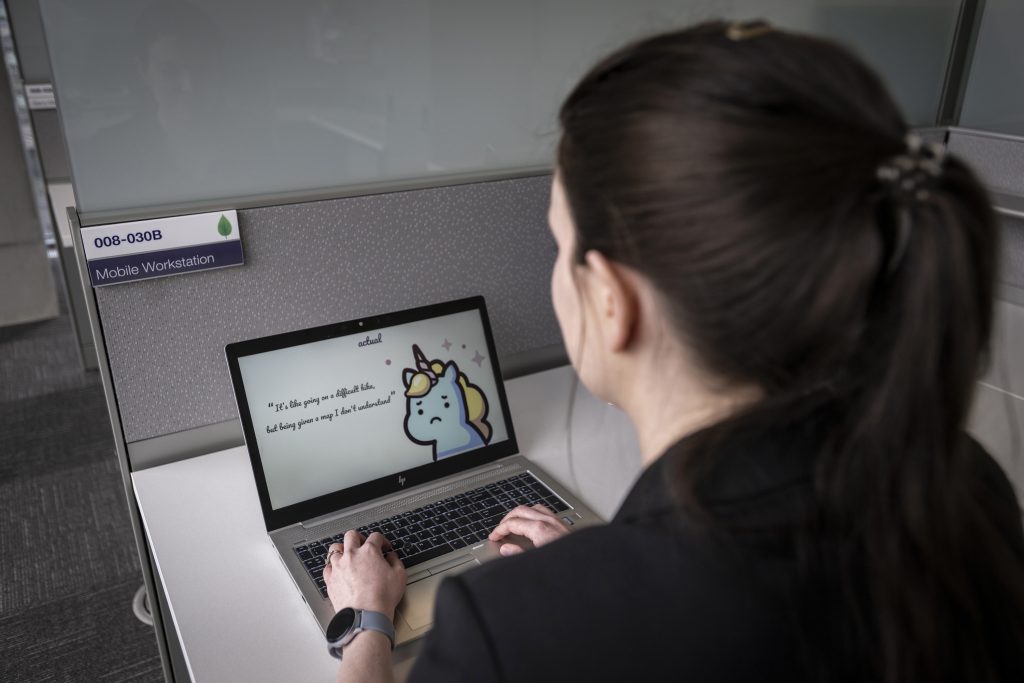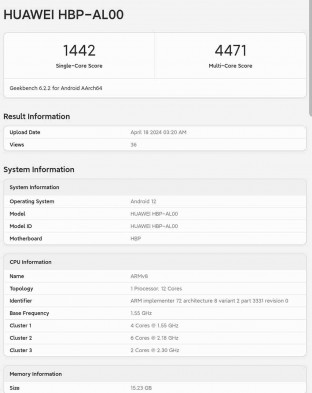Tech
With GitHub, Canadian company TELUS aims to bring 'focus, flow and joy' to developers – Transform – Microsoft


Katie Peters could have used an advocate as she embarked on her tech career.
In her first year at the University of British Columbia, Peters’ computer science classes were split almost evenly along gender lines. But most of her female classmates soon switched majors, and by Peters’ final year there were typically only two or three women in those classes. She felt increasingly isolated and was uncomfortable asking for help.
After graduating with a computer science degree in 2012, Peters took a job as a software developer for TELUS, a Canadian telecommunications company. Joining an organization with more than 90,000 employees, Peters initially found it challenging to make her way around its procedures and structure. So when the position of staff developer opened on TELUS’ new engineering productivity team last fall, Peters jumped at the opportunity.
“I wanted to be the person that I wish could have helped me,” says Peters, who started in the role last October. “There are so many complicated processes in a company as large as TELUS and it’s really difficult to navigate. You end up feeling stupid a lot of the time and you have to ask lots of questions. I don’t want other people to have to experience that. I want to make that better.”
Peters is now helping lead an initiative aimed at changing TELUS’ culture to better empower its developers. Much of that effort is focused on encouraging widespread adoption of Microsoft’s code-hosting platform GitHub to help automate software development at TELUS and make it easier for the company’s roughly 4,000 developers to collaborate. TELUS recently made GitHub available companywide and signed an agreement with Microsoft to help manage its enterprise-level use of the platform and provide GitHub training to developers.
Justin Watts, head of developer experience for TELUS, says Peters’ experience as both a developer and a previous member of TELUS’ enterprise architecture team makes her ideally suited to help redefine the company’s approach to software development.
“This is all being driven by Katie and the vision she has,” says Watts, who heads the engineering productivity team. “Katie is great at capturing that relationship with the developer and what our goals are. She is a brilliant developer and a brilliant technologist.
“She’s seen as a really senior, influential mind in the company.”


Peters is already shaking things up. Drawing inspiration from “The Unicorn Project,” a 2019 novel by Gene Kim about a group of renegade developers seeking to overthrow the existing order and make work more fulfilling, Peters has replaced the usual staid presentation decks with ones featuring swirling designs, pink and purple tones and cartoon unicorns, and adopted the book’s mantra of bringing “focus, flow and joy” to developers.
Transform recently chatted with Peters over Microsoft Teams from her home in Vancouver, where she lives with her husband and 2-year-old daughter. The interview has been condensed for clarity and length.
TRANSFORM: Why was the engineering productivity team formed and what is its mission?
PETERS: We’ve been transitioning to the cloud for software development for a while, but it’s challenging. It greatly simplifies very complicated operations activities and turns those things into code. So instead of needing an ops professional to manually create a bespoke server for the developer to host their application, the definition of that server is standardized and codified in a way that can be stored and managed alongside the application code.
That makes it easier for a developer to manage it themselves, but they’re now expected to own that server definition, where sometimes they’ve never previously had exposure to the ops side of software development. That’s a really difficult transition for people. And a lot of legacy processes haven’t caught up to cloud development yet. We’re giving developers a lot more freedom, but it’s also a lot more responsibility in different areas than they might not have had experience in before. So we have to make that not a burden for them.
Our team exists to help developers make that cloud transition and to update all of that legacy process baggage to align with the new cloud paradigm.
TRANSFORM: Why did TELUS see a need to change how software development is done?
PETERS: We need to stay innovative and creative. We need to be able to react quickly to the market, and if we want to be able to do that, we need to give developers the time and the space and the safety to do that while also making sure that what they’re building is secure and reliable.


To enable us to move quickly without sacrificing security and reliability, we need to really make that developer experience our focus. I treat it as the developers are my customers, and what experiences can I give them so that they are inspired to keep pushing and keep innovating, and just unblock them as much as I can, to make it as simple and fast as I can so that they can keep innovating.
TRANSFORM: What role can GitHub play in helping developers shift to this new cloud paradigm?
PETERS: GitHub used to be just for storing the source code, but now it has a lot of other features. When you’re writing code, for example, you need to be able to plan that work and distribute it to people. We can use GitHub projects for that.
After you’ve developed code, there are tools you can use to tell you if there are problems with how you’ve written it. In the past, we would wait until we were trying to release that code to our customers before we would run those tests. So when things went wrong, it was really costly. Now, developers can push their code back to the public repository on GitHub for the rest of the team to see. Then we can run all of these automated tests and security scans, so it’s easier to make fixes right then, whereas in the old world, it was potentially months later they would get that feedback.
With GitHub taking over that developer lifecycle, that allows us to build in a lot of automation so we have end-to-end visibility on where developers are spending their time and what they’re doing. That’s good for metrics on how we can improve that experience and make it better for people.
TRANSFORM: GitHub is ultimately a tool. What other components are you thinking about in driving this cultural shift at TELUS?
PETERS: As a big company, TELUS can be a little formal. It’s hard for people to ask for help. We really wanted to change that culture. We wanted to be open and approachable and let people vent to us in a psychologically safe place to share their problems. That way, we can understand all the little things that add up to so much toil.


We have a lot of really creative people at TELUS, a lot of talented developers, and they come up with really interesting ways to deal with the status quo that don’t actually fix the problem for anyone else — it’s just a workaround that they’ve developed. We need people to feel safe coming to us with their problems and trust that we can help them solve them, so that we can then bring that to everybody and drive that improvement across the board.
TRANSFORM: How did your interest in computers start?
PETERS: My parents really wanted me to be interested in computers, so they bought me my own computer when I was a kid. They got me into robot building camps and software development camps and all sorts of stuff.
I started playing video games when I was 4 years old. I played Putt-Putt Goes to the Moon and Fatty Bear’s Birthday Surprise. I loved all sorts of video games. Morrowind was another big game for me. They had a modding community, and I learned a lot about computers in general by participating in that community. (Modding refers to the practice of altering content or creating new content for video games.)
I wanted to work in the video game industry, but when I was applying for co-op placements during university, I got into Sierra Wireless (a Canadian IoT solutions provider). As I was exposed to that industry, I liked the consistency and stability of the telco industry and the feeling that you’re contributing to something important. Providing internet to people is really important.
TRANSFORM: You said you felt at times like you have imposter syndrome. Did you feel that way particularly as a female developer?
PETERS: I’ve always had a lot of imposter syndrome, which I think is true for a lot of software developers. I’m not unique in that way. I do think it’s worse as a woman, but I think it’s just common in software development to have those kinds of feelings. The industry is kind of steeped in this mythology of like, really smart geeks who live and breathe computer science and build Google or Microsoft in their basement, and they’re all geniuses and always know everything about everything.


There are really high expectations in the software industry in general, and I think everybody experiences that, but I think it’s amplified for a woman. Because the expectation, I think, at least when I started in the industry, was that I don’t actually know what I’m doing. I’m a poseur and I just got my place because I’m a woman. So I had to work really hard to appear extra smart.
TRANSFORM: Is it important to you, as a woman in this role, to attract more female developers to the field?
PETERS: Absolutely. When you’re the only woman, it can be really challenging. And when you have one or two women in a large group, sometimes you can be forced into this weird sense of competition with them. People are always comparing you to the other women.
But when there’s a critical mass of women, you really get to be comfortable working with other women who typically come from the same kinds of experiences. You get to open up a little bit in a way that you might not have been able to otherwise. Most women I encounter in computer science are so supportive and friendly.
It always makes me happy to see more women in the industry. Any opportunity I have to try to make that easier for somebody or to help somebody go in that direction, I’m very happy to be able to do that.
Top photo: Katie Peters stands on a deck at TELUS’ headquarters in Vancouver, B.C. (Justin Watts photo courtesy of Justin Watts; all other photos by Jennifer Gauthier)
Tech
17 Things You’ll Want To Pack For Your Next Weekend Getaway


|
|
Planning for a weekend away? Good for you! If you love useful travel finds, but don’t want to spend your precious time sifting through pages and pages to find what you need, we’re here to help. Whether you’re looking to maintain your skincare routine, keep your gadgets from dying while you’re on the road, or want to ensure you get a good night’s sleep when you reach your destination, you’re almost guaranteed to find something worth adding to your shopping cart.
Here are a few things you won’t want to forget to pack for your next weekend getaway
Disclaimer: The prices displayed are accurate at the time of publication. We’ll do our best to keep them as up-to-date as possible, but you may see slight changes.





Tech
Motorola Edge 50 Pro goes global, launches in Europe, South America and Asia


|
|
The Motorola Edge 50 Pro was first announced in India at the start of the month, but it was only the first of several Edge 50 devices to come. Today we welcomed the Edge 50 Ultra and the Edge 50 Fusion. Nevertheless, it’s important to highlight that today is also the start of wider availability for the Pro.
The Edge 50 Pro is launching in select European markets at a price of €700 (here it is in Germany), making it more affordable than the Ultra (which has a €1,000 asking price). Check your local Motorola site as well as major retailers.
The Ultra has more processing power (Snapdragon 8s Gen 3 vs. 7 Gen 3) and a more capable camera system to match its price. Compared to the €400 Moto Edge 50 Fusion, the Pro has the better chipset and screen, better camera setup and faster charging to boot.
Anyway, The Pro will also be available in Asia and Oceania, plus select Latin American markets (Brazil, Chile, Colombia, Mexico).
Motorola Edge 50 Pro
There’s no mention of North America, but Motorola maintains a slightly different lineup for the US and Canada (well, different names if nothing else). The press release does end with the promise of “expanding the edge family in North America this year”.





Tech
Motorola's Edge 50 Phone Line Has Moto AI, 125-Watt Charging – CNET
Motorola’s debuting three new flagship phones for its Edge line Tuesday, all of which spotlight artificial intelligence features meant for improving photography.
The Motorola Edge 50 line comes in three tiers, headlined by the Edge 50 Ultra, a midlevel Edge 50 Pro and a base level Edge 50 Fusion.
While these three Moto Edge 50 phones are lined up for an international release, Motorola says that new US-bound Motorola Edge phones will arrive later this year. Motorola used a similar release strategy last year, when 2023’s Motorola Edge and Motorola Edge Plus came to the US with slight modifications to the Motorola Edge 40 line that released in other territories.
The three Moto Edge 50 phones debut Moto AI, which is Motorola’s own take on bringing artificial intelligence features to its latest line of phones. It follows generative AI features we’ve seen from Samsung with Galaxy AI and Google with its various AI features provided to the Pixel 8. At this time, Motorola says Moto AI will be sprinkled throughout the phone’s operating system, but it emphasized a Photo Enhancement Engine that will use AI to apply settings from multiple shooting modes in order to process photos. AI is also powering on-device search and tools for generating decorative themes.
Watch this: Motorola’s Rollable Concept Phone Wraps on Your Wrist
01:33


The Motorola Edge 50 Fusion is the base level phone in the line, starting at 399 euro.
The Motorola Edge 50 Fusion starts at a much cheaper 399 euros (converts to roughly $425) and has a 6.7-inch OLED display running at a 120Hz refresh rate. Its 50-megapixel main camera is paired with a 13-megapixel ultrawide camera, while a 32-megapixel selfie camera is placed on the front. The phone will run on Qualcomm’s Snapdragon 7S Gen 2 processor and comes in forest blue, hot pink and marshmallow blue. The hot pink model comes in a vegan suede material, while marshmallow blue will ship in vegan leather.
The three phones will start shipping in the coming weeks, starting with European and Latin American markets before coming to Asia and Oceania.
The Moto Buds Plus will get a US release and cost $130.
The Motorola Buds Plus are also unveiled alongside the Edge 50 line, but these earbuds will get a US release as they hit stores starting Tuesday. Similar to Apple’s AirPods Pro, the Moto Buds place support head tracking when paired up with a Motorola phone. The buds include a triple-mic system for noise suppression and a CrystalTalk AI feature meant for helping clear up voice calls while in noisy environments. The Moto Buds Plus will come in Forest Green and cost $130 in the US.
Moto G Power 5G Looks Good in Vegan ‘Leather’ and Lilac
Editors’ note: CNET used an AI engine to help create several dozen stories, which are labeled accordingly. The note you’re reading is attached to articles that deal substantively with the topic of AI but are created entirely by our expert editors and writers. For more, see our AI policy.
-
Real eState9 hours ago
Search platform ranks Moncton real estate high | CTV News – CTV News Atlantic
-
Tech8 hours ago
Motorola's Edge 50 Phone Line Has Moto AI, 125-Watt Charging – CNET
-
News21 hours ago
Budget 2024 sets up a ‘hard year’ for the Liberals. Here’s what to expect – Global News
-



 Investment17 hours ago
Investment17 hours agoSo You Own Algonquin Stock: Is It Still a Good Investment? – The Motley Fool Canada
-
Media21 hours ago
Psychology group says infinite scrolling and other social media features are ‘particularly risky’ to youth mental health – NBC News
-
Economy20 hours ago
China’s economy grew 5.3% in first quarter, beating expectations – CityNews Halifax
-



 Sports20 hours ago
Sports20 hours agoTiger Woods finishes Masters with his highest score as a pro, sets sights on coming majors – The Globe and Mail
-
News23 hours ago
Freeland 2024 budget 'likely to be the worst' in years: Dodge – CTV News






